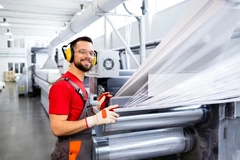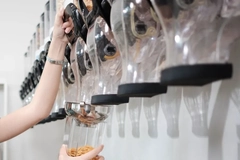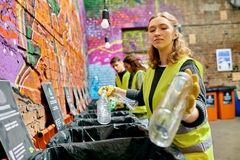Marchesini and Sea Vision combat drug counterfeits with blister serialization tech
18 Jul 2022 --- Marchesini Group and Sea Vision Group have developed a technology for the serialization, aggregation and traceability of blisters when separated from their cartons, which are important for combating drug counterfeiting and avoiding potential health risks.
The two companies have launched the Integra 720V robotized blister line, the BLA 420 CW high-speed labeler, and the complete Track & Trace software solution developed for the pharmaceutical industry in the areas of Industry 4.0, environmental sustainability, safety and product traceability.
Traceability beyond requirements
Product identification is paramount in the healthcare industry and a prerequisite in the case of cartons and pallets.
However, it does not apply to primary packaging such as blisters – despite the separation of the blister from its carton being a potential health risk for the patient. The separation of blisters from cartons is not uncommon but is considered product manipulation.
 Separating the blister from its carton is a potential health risk for the patient.There is also a risk of counterfeiting when it comes to drugs’ primary packaging. Taking this into consideration, pharma companies invest hugely to ensure that secondary packaging is traceable, but there is still a hidden gap that could cause “serious damage.”
Separating the blister from its carton is a potential health risk for the patient.There is also a risk of counterfeiting when it comes to drugs’ primary packaging. Taking this into consideration, pharma companies invest hugely to ensure that secondary packaging is traceable, but there is still a hidden gap that could cause “serious damage.”
Regulation does not require the serialization of individual blisters yet. However, the two companies intend for this technology to provide suppliers with the opportunity to protect consumers, combat counterfeiting and anticipate future regulatory implementations.
Robotized and robust blister line
Integra 720V is a completely robotized blister line made up of two sections: a blister packaging machine that forms the blisters and places the products in their cavities and a cartoning machine that packages the blisters in their cartons. It is controlled by software that permits automatic synchronization of the transfer, tracking and stacking system.
The line can produce up to 720 blisters made of aluminum and PVC/PVDC/PET/aluminum among others. It can produce up to 500 cartons per minute with tuck-in or glue closure and many other combinations.
This technology is new to the market for primary pack serialization and aggregation. It includes a complete range of technologies that print, inspect and pack serialized blisters and perform aggregation with cartons, all integrated into a 4.0 environment.
 This technology is intended to offer product traceability and combat drug counterfeiting.Marchesini developed the Predictive Maintenance solution for the Integra line. With the use of AI, the data of the sensors installed on board the machine is collected, analyzed, and transformed into information useful to the operator.
This technology is intended to offer product traceability and combat drug counterfeiting.Marchesini developed the Predictive Maintenance solution for the Integra line. With the use of AI, the data of the sensors installed on board the machine is collected, analyzed, and transformed into information useful to the operator.
The data is displayed on a web platform where checking this information will enable maintenance to be scheduled in advance to avoid any failures.
“Be”-ing sustainable
Marchesini currently offers three packaging solution lines as part of its commitment to expanding the range of environmentally sustainable packaging materials used. It also forms part of the company’s “Be” project that promotes environmental, social and economic sustainability.
The MT1300 line that develops stick packs, enables the company to work with PP-based packaging materials – with and without PE – such as 100% recyclable plastic monomaterials like OPP or BOPP with a metalized intermediate layer.
Further environmental sustainability efforts include a machine – suitable for packing products into cartons with glue, tuck-in, or combined closures – called MA50 - 80 - 100 and the FB series, which thermoforms trays for vials, ampoules and syringes out of PVC, PET, PS, PP and PLA multilayer laminate films.
Drug counterfeiting
In other developments, researchers at Purdue University, US, have developed an edible “security tag” embedded into medicine to expose counterfeiters. The tag acts as a digital fingerprint for each drug capsule or tablet, using an authentication technique called “physical unclonable functions” or PUF.
Using this new solution, counterfeiters would have to crack a complicated puzzle of patterns to imitate a drug. PUFs can generate different responses each time they are stimulated, rendering them unpredictable and extremely difficult to duplicate. Even the manufacturer wouldn’t be able to recreate an identical PUF tag.
The tagging of drugs acts as a guard against fakery and helps pharmacies better verify the legitimacy of a drug before selling it to consumers.
Edited by Mieke Meintjes











